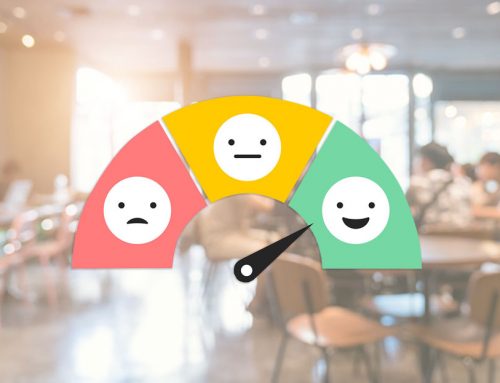I received an email from a client last week asking if there were any statistics for her website that she could access.
Now, this seems innocent enough as far as requests go, but I found myself actually getting excited to respond! These conversations are fantastic because once a client starts to become curious about their stats, it tells me they are moving from the “yeah, yeah, I got a website… what of it?” mindset, into the “let’s make this bad boy WORK for us!” train of thought!
(Yes, I said excited… lol… I know… Closet nerd ;o)
In some cases (rare, but it happens), an organization or company just needs an info-based site to say they have one – a domain that ties to their email accounts. They aren’t looking for sales, they aren’t promoting anything, and they really don’t care if anyone visits or not. That might be 2% of all my clients.
For everyone else, the investment into your website is categorized as an advertising investment. You build the site, you maintain it, and you cross your fingers hoping that people will actually visit.
Organizations that have marketing agencies, or SEO companies, working on their websites, are likely reviewing their site stats on a regular basis. Part of the job for these outsourced agencies is typically to guide you on making the most of your website at all times.
But what about the rest of us?
(Side note: NEVER settle for statistics provided from a third party, not directly linked to your site, like, for example, an online directory. If you are provided a stat sheet from someone, ALWAYS go back to your primary site statistics and cross reference for accuracy. Your stats are coming directly from your server activity and are the best way to track usage.)

Understanding the big words
I say that facetiously, of course, but any word that we don’t understand the meaning to can feel like a big word, lol. At least, it does for me! Ha!
For our WordPress clients, we use WP Statistics by default. This is a great, lite plugin that provides tons of comprehensive data in easy-to-understand ways. When you first access your stats page, however, the mass amount of data – even if it is displayed in lots of great colourful charts and graphs – can feel a little overwhelming.
(Yet another side note – there are many stat trackers, including Google Analytics which we recommend for more serious stat trackers and marketing campaigns. WP Statistics is simply the default one we include for everyone.)
The first thing to remember is this – most of this in-depth information is for more technical users, or advanced marketing groups working on your site. For the rest of us, you can break down the important information in three simple categories:
- How many people have visited your site?
- How did they get to your site?
- And what did they do while they were on your site?
To get this information, you must understand some of the basic terminology:
Unique Visitors – A unique visitor is the number of individual visitors to your website within a specified time period. For example, if one person visits a website 4 times, it will be recorded as 1 unique visitor. This is monitored by the server logging the visitor’s unique internet connection IP address.
Visits – This is the number of times your website has been visited by people, if one person visits a website 4 times, it will be recorded as 4 visits.
Hits – This term is often used incorrectly since many people think it means the number of visits to your website. A hit is actually a request to a web server for a file (e.g. an image file). Since a web page has multiple elements that need to be downloaded in order to be viewed, the hit number can be as high as 15 per page.
Page Views – This is the total number of times a web page has been viewed. This represents when a visitor lands on your website and clicks through to view multiple web pages. Each of these web pages viewed is categorized as a page view/impression. If the same page is viewed more than once by the same person, it will be counted multiple times.
Pages/Visit – Pages per visit is the average number of pages viewed during a visit to your site. This is a useful metric to use when measuring how engaged a user is with the content on your website. Again, if the same page is viewed more than once by the same person, they will be counted multiple times.
Average visit duration/Time spent on site – This is the average amount of time (in seconds/minutes) users spend on your website.
Bounce Rate – Bounce Rate is a percentage that is calculated by taking the number of single-page visits (i.e. visits in which the person left your site from the entrance page without interacting with the page) as a percentage of the total visits.
Traffic Sources – A Traffic Sources report will breakdown where the visitors to your website came from (i.e. from what source did they find your website). Examples of Traffic Sources include:
Search traffic from search engines such as Google and Bing. This can be broken down into organic traffic from natural search listings or PPC traffic from paid search campaigns such as Google AdWords.
Referral traffic from other websites, blogs, social media, etc.
Direct traffic from a user has typed your web address into their browser or arrived at your site from a bookmarked link.
Campaigns from Social Media adverts and email marketing campaigns. You can use this report to measure the success of your individual marketing campaigns. If you have multiple campaigns running at the same time you can differentiate between them from this report by using tracking parameters in your links.
Definitions Source: www.yola.com

Putting this information to WORK for you
Getting back to my original inspiration for this article – my client from last week – after reviewing her stat information, her first comment was “We need to be more active on our website, it seems like the interest is pretty high!”
Perfect!! She reviewed her stats, understood the data, and already began the wheel-spinning motion to get her site working for her! One smart cookie!! Here’s how:
- Know your visitor numbers. Do you get a lot of visits from your unique visitors? If yes, then you know that people are coming back again and again! You’ve got something they want, and they are looking to you as an authority source for that information.
- Identify where they found you. If, for example, you have a lot of click-throughs from Facebook, you know that your Facebook page is doing a great job of promoting you – so you want to make sure that you keep active on your social media! People will stop visiting if there’s been no updates for months.
- What are the most popular pages they visit? If your blog page has a lot of visits, then take advantage of that by posting more articles. If people are really focused on your event calendar page, make sure you keep that up to date with relevant information as well. You can also utilize these more popular pages to gently expose users to other areas of your site that you want to promote, like volunteer sign-ups, or user surveys. This type of visual promotion is easily done via sidebars on your content pages.
- And if your site has a lot of excess information on there that you find no one accesses, maybe you need to think about a little Spring Clean-up for your site (come back next week for my Spring Clean-up checklist!). Get rid of when you don’t need to optimize the site better for a better user experience.

Understand the jargon? Recognize the need? Still need help? No problem! We’ve got you covered!
Luckily, our office has its very own built-in stats gurus! If you would like more information on understanding your site statistics, and how to better your website’s overall performance, Please contact us. We are always happy to review a client’s site and make professional recommendations for how to maximize your site’s effectiveness. We can even go one step further and do a complete site audit for you.
Please call us or email us for more information.



